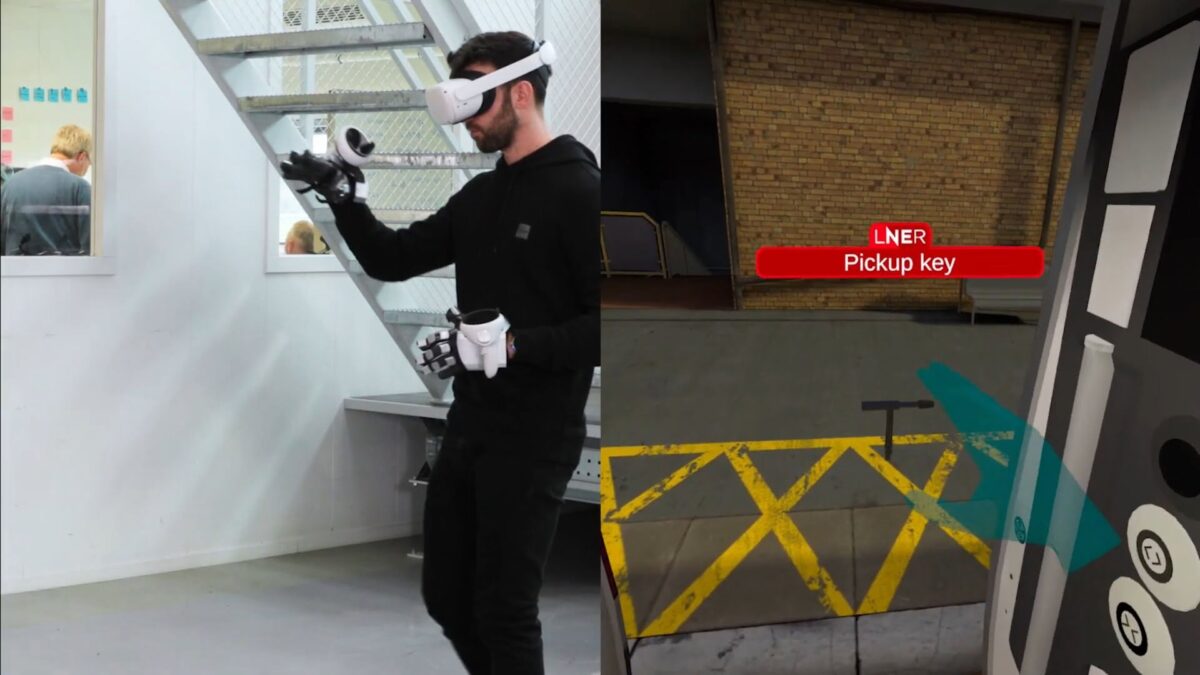In the UK, some rail employees train with VR gloves

In the UK, some rail employees train work routines in virtual reality. What does the VR training look like?
Employees of the British rail operator will be trained in virtual reality in the future. In the VR training sessions, they will learn how to install train ramps for wheelchair users during a short break. The VR glove Senseglove Nova is to provide the right feeling.
Special VR glove for immersive training
London North Eastern Railway (LNER) is partnering with Senseglove for VR training. The start-up has been manufacturing haptic VR gloves and developing VR training for the industry for over four years.
Since presenting the Senseglove Nova at CES 2021, the company has been able to attract well-known partners such as Airbus, the Royal Netherlands Army and Siemens. The German automotive group Volkswagen also uses the Senseglove Nova for assembly training. Employees practice installing a sliding door on the T6 minibus.
The Senseglove Nova is slimmer and more inconspicuous than other VR gloves. Instead of clunky artificial joints, it uses tendon-like threads that are pulled along the fingers by a motor with magnetic friction brakes. This is supposed to realistically simulate weights of up to two kilograms per finger.
VR training is well received
LNER employees will be equipped with a Meta Quest 2 for VR training. The haptic feedback of the VR glove is intended to provide a realistic feeling for movements and the parts simulated in the virtual environment.
Virtual tools are supposed to feel like they do in real life, and even the use of mechanics is simulated in a physically correct way. The training takes the employees into a virtual railroad car. There, they must use special tools to remove a ramp for wheelchair users from the fixture provided, prepare it and attach it to the boarding point.
An initial case study by LNER and Senseglove on the jointly developed VR training was positive. According to the study, 90 percent of participants would feel able to perform the assembly in reality without further training.
Note: Links to online stores in articles can be so-called affiliate links. If you buy through this link, MIXED receives a commission from the provider. For you the price does not change.